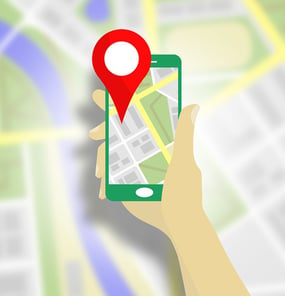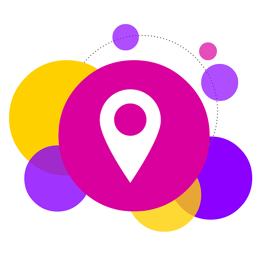10 Essentials for Successful eCommerce Mobile App Development
Globalization has bridged the boundaries for trade and communication like never before. With the advent of eCommerce, the internet is transformed...

 Location-based marketing is taking personalized marketing to the next level. Whether it is about delivering a personalized message to people near your retail store or a discount offer to people who just visited your competitors, location-based marketing has tremendous potential to engage potential customers for a targeted campaign. According to a study by Skyhook, Brands can expect as much as a 20% increase in conversion by adding location data to their ad data. But how specific can brands be when they try to target people based on location? Could it be a country, state, city or an area? With the help of geofencing technologies like RFID and GPS brands can help target even minute locations like a building or a street. They can even set up an area like, ‘within 2 miles of Central Park’ to define a radius in which a targeted marketing message is displayed.
Location-based marketing is taking personalized marketing to the next level. Whether it is about delivering a personalized message to people near your retail store or a discount offer to people who just visited your competitors, location-based marketing has tremendous potential to engage potential customers for a targeted campaign. According to a study by Skyhook, Brands can expect as much as a 20% increase in conversion by adding location data to their ad data. But how specific can brands be when they try to target people based on location? Could it be a country, state, city or an area? With the help of geofencing technologies like RFID and GPS brands can help target even minute locations like a building or a street. They can even set up an area like, ‘within 2 miles of Central Park’ to define a radius in which a targeted marketing message is displayed.
Want to develop a mobile app that can use geofencing? Get in touch.
Geofencing as the name suggests refers to setting up virtual boundaries (fencing) around a specific location (geo) to trigger an action as soon as someone enters or leaves the target location. The marketing part comes in when a targeted message is delivered as soon as a potential customer crosses the fenced location. Geofencing uses technologies like radio frequency identification (RFID), GPS, Bluetooth etc. to enable location identification. It depends upon mobile apps like messaging applications to make the distribution of targeted messages possible. By leveraging this technology many businesses especially retailers can benefit in many ways. Here are some advantages of using geo-fencing for retail marketing.
Read More: How to improve cross-selling by predicting what your customers want to buy?

By personalizing your marketing messages based on the location you can target people in the vicinity of your store thus increasing the possibility of attracting more people to your outlets. This ensures improved targeting and personalization of marketing messages.
Consumers are more likely to engage with your brand on mobile if your app provides them with relevant offers at the right time. This ensures better engagement with the consumers and in turn increases brand loyalty and advocacy.
Geofencing enables you to send offers to people who are in the vicinity of your store. This allows you to easily analyze the response and effectiveness of your campaign and makes it easy to optimize marketing efforts for better ROI.
Location-based marketing is highly personal and targeted which improves its efficiency significantly. By delivering specific offers to people based on their location you improve the impact that your communications create on the buyers.
Once you implement location-based marketing you get access to a lot of data that can be used to generate insights like which stores are performing better, which target segment is more approachable, which locations are more suitable for expanding business etc.
Read More: 5 ways of using big data in retail
Geofencing relies on one of these four mobile technologies to identify the location and implement algorithms based on boundaries. Here is a comparison all four of them so that you can choose the right option for yourself.
WiFi is a standard feature in all smartphones devices, giving it a good potential reach. If it is an open network then your customers are not required to opt-in to receive messages. One downside is that customers need to keep their WiFi on and it results in heavy battery drainage.
It offers the maximum level of precision in tracking and does not require any extra effort from the consumer. It is also a battery friendly way of making communication possible. The only problem with RFID tracking is that it is difficult to implement and involves high investment to get started.
GPS is a cost-effective solution that offers a good precision when used outdoors and it can be easily complemented with other location-based solutions like WiFi. The problem is that it results in heavy battery drainage and is not as accurate as other solutions when used indoors.
Bluetooth beacons are battery-powered devices that help in location identification of all devices within the signal radius using Bluetooth and location. They ensure high accuracy at optimal battery usage. But you will need to install these devices to all locations you need to track making it difficult to implement at large scale.

Overall Geofencing is great technology at the disposal of marketers. It enables them to upgrade the level of personalization they provide in marketing. Many companies have successfully used geofencing to provide target offers to their potential buyers. For example, in 2015, Elle Magazine teamed up with Swirl, ShopAdvisor, And RetailMeNot on a Beacon-based Geofencing program. The initiative aimed at providing location-based offers and content to users based on their preferences in clothing and brands they love. The entire campaign was named Shop Now! This is a perfect example of how brands can leverage geofencing for location-based marketing.
At NewGenApps, we have 10+ years of experience in developing mobile apps. We have successfully built apps like GeoConnect that utilize location-based solutions to collect data and give a targeted message to users. If you want to develop an app that can leverage geofencing or if you need to upgrade your current app for this feature then feel free to contact us.

Globalization has bridged the boundaries for trade and communication like never before. With the advent of eCommerce, the internet is transformed...

So you have developed an amazing application (need help? Check out this blog) and now are ready to release it. After developing an app, marketing is...